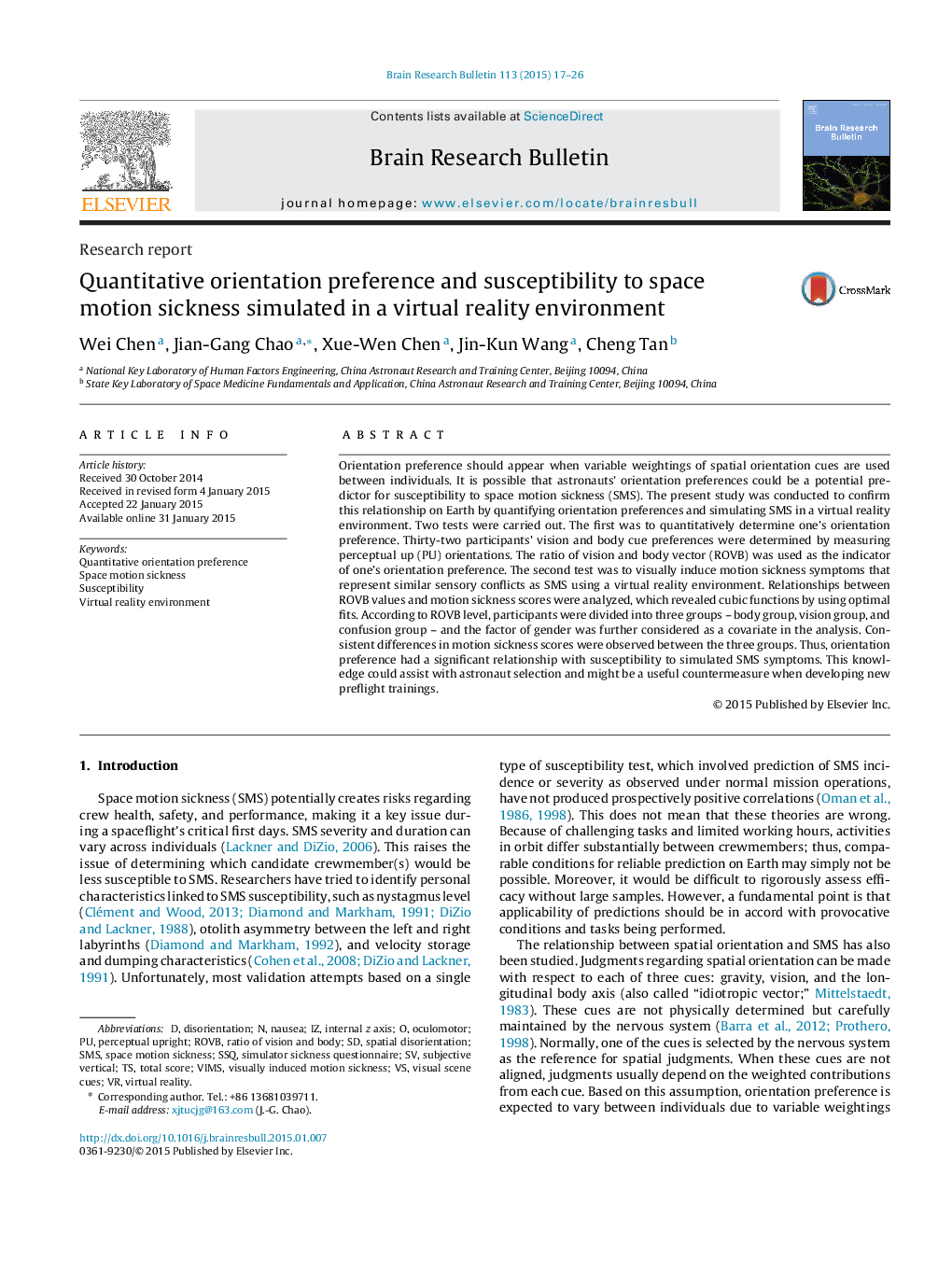| کد مقاله | کد نشریه | سال انتشار | مقاله انگلیسی | نسخه تمام متن |
|---|---|---|---|---|
| 4318699 | 1613242 | 2015 | 10 صفحه PDF | دانلود رایگان |
• Preference appears when individuals use variable weightings of cues in orientation.
• Orientation preference could be a potential predictor of space motion sickness (SMS).
• An effective method to quantitatively determine orientation preference is built.
• Simulated SMS symptoms are induced using a virtual reality environment.
• Relationships of orientation preference with symptoms are confirmed.
Orientation preference should appear when variable weightings of spatial orientation cues are used between individuals. It is possible that astronauts’ orientation preferences could be a potential predictor for susceptibility to space motion sickness (SMS). The present study was conducted to confirm this relationship on Earth by quantifying orientation preferences and simulating SMS in a virtual reality environment. Two tests were carried out. The first was to quantitatively determine one's orientation preference. Thirty-two participants’ vision and body cue preferences were determined by measuring perceptual up (PU) orientations. The ratio of vision and body vector (ROVB) was used as the indicator of one's orientation preference. The second test was to visually induce motion sickness symptoms that represent similar sensory conflicts as SMS using a virtual reality environment. Relationships between ROVB values and motion sickness scores were analyzed, which revealed cubic functions by using optimal fits. According to ROVB level, participants were divided into three groups – body group, vision group, and confusion group – and the factor of gender was further considered as a covariate in the analysis. Consistent differences in motion sickness scores were observed between the three groups. Thus, orientation preference had a significant relationship with susceptibility to simulated SMS symptoms. This knowledge could assist with astronaut selection and might be a useful countermeasure when developing new preflight trainings.
Journal: Brain Research Bulletin - Volume 113, April 2015, Pages 17–26
